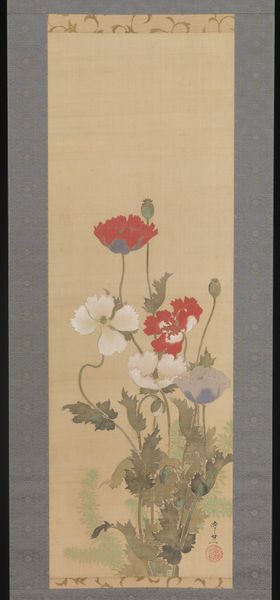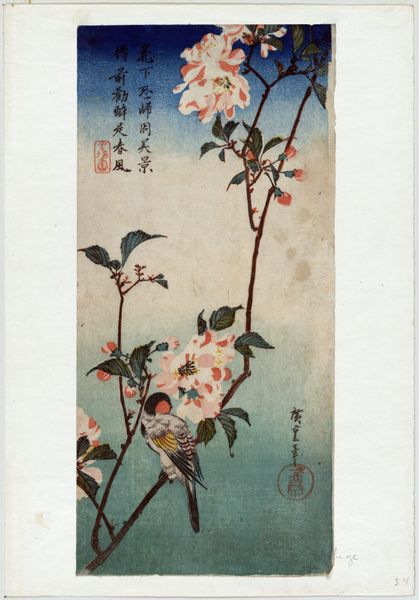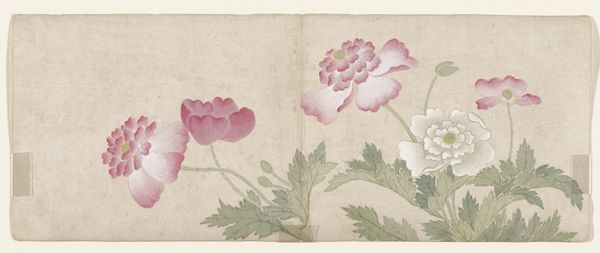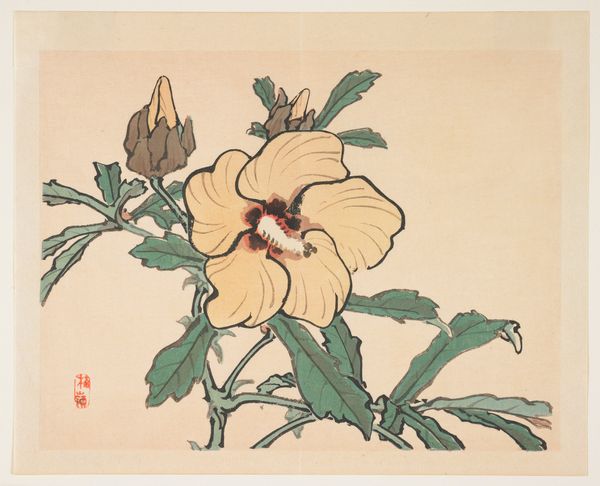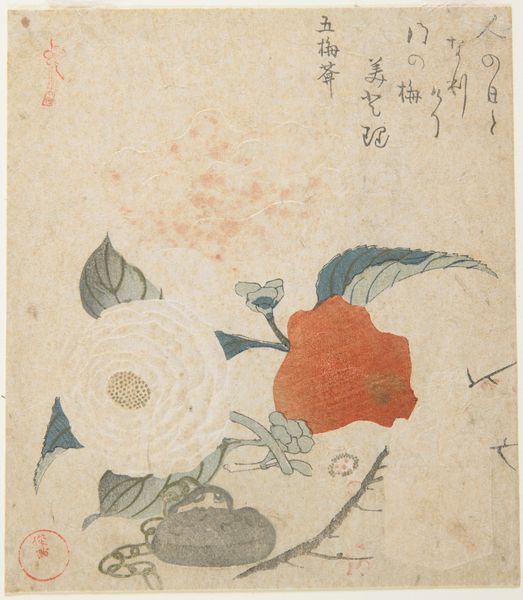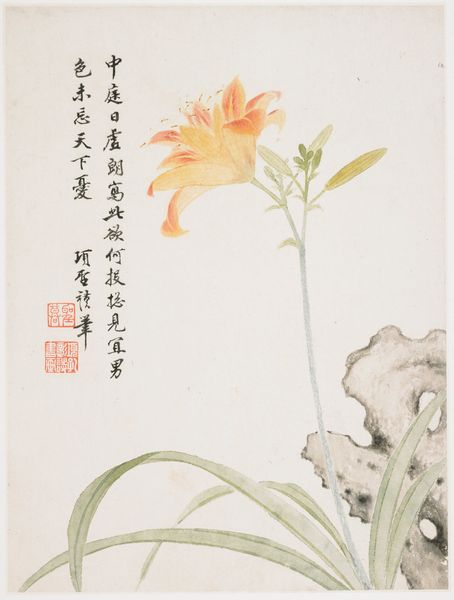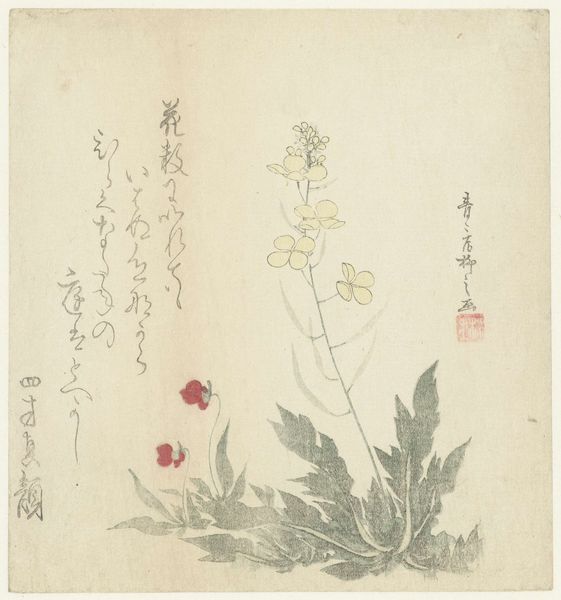
painting, watercolor
#
water colours
#
painting
#
asian-art
#
landscape
#
figuration
#
watercolor
#
watercolor
Dimensions: Image: 48 1/2 × 22 7/8 in. (123.2 × 58.1 cm) Overall with mounting: 88 5/8 × 30 1/2 in. (225.1 × 77.5 cm) Overall with knobs: 88 5/8 × 34 1/4 in. (225.1 × 87 cm)
Copyright: Public Domain
Editor: This is "Red Lotus and Fish," a watercolor painting created by Tang Guang sometime between 1650 and 1700. It's currently housed at the Metropolitan Museum of Art. It feels serene, almost contemplative. I’m particularly struck by how simply he captured the form of these lotus blossoms. What do you see in this piece from a historical perspective? Curator: Well, placing this painting within its socio-political context is fascinating. Think about the late Ming, early Qing dynasty—a time of upheaval and transition in China. Scholar-artists like Tang Guang often turned to traditional subjects, such as the lotus, as a form of cultural resistance or perhaps even escapism. Editor: Escapism? Curator: Yes, the lotus itself is a loaded symbol in Buddhism and Chinese culture generally, representing purity, enlightenment, and the ability to rise above murky waters. In a time of political uncertainty, focusing on these themes could have been a subtle way to comment on the existing power structures or simply to find solace. How might the setting in which the artwork lives today, the Metropolitan Museum, shape the way we view its narrative? Editor: That’s an interesting point. Now displayed in a Western museum, removed from its original intended audience, do we perhaps miss some of those nuances of cultural commentary? I mean, does its display risk obscuring that historical dimension? Curator: Precisely! Its presence here raises questions about cultural exchange, appropriation, and the West’s relationship with Asian art history. But, on the other hand, being here enables new conversations and broader understanding across audiences who might not otherwise encounter such art. Editor: I never considered the setting as part of the story, that museums can transform art’s meanings over time. Curator: Indeed, considering context, the cultural implications on where it originated, and the narratives the painting creates in museums really allows you to think critically.
Comments
No comments
Be the first to comment and join the conversation on the ultimate creative platform.


